A voltmeter of resistances 400(Ω)is used to measure the potential difference across the 100(Ω)resistor in the circuit shown in figure.(a) What will be the reading of the voltmeter ?(b) What was the potential difference across 100(Ω)before the voltmeter was connected ?

The correct Answer is:(a) 24 V,
(b) 28 V
Step by step video solution for A voltmeter of resistances 400(Omega)is used to measure the potential difference across the 100(Omega)resistor in the circuit shown in figure.(a) What will be the reading of the voltmeter ?(b) What was the potential difference across 100(Omega)before the voltmeter was connected ? by Physics experts to help you in doubts & scoring excellent marks in Class 12 exams.
Updated on:21/07/2023Topper's Solved these Questions
- CURRENT ELECTRICITYBOOK - RESONANCE ENGLISHCHAPTER - CURRENT ELECTRICITYEXERCISE - Exercise-1 (Part-2)
47 Videos
- CURRENT ELECTRICITYBOOK - RESONANCE ENGLISHCHAPTER - CURRENT ELECTRICITYEXERCISE - Exercise-1 (Part-3)
2 Videos
- CURRENT ELECTRICITYBOOK - RESONANCE ENGLISHCHAPTER - CURRENT ELECTRICITYEXERCISE - Solued miscellaneous Prolblems
8 Videos
- COMMUNICATION SYSTEMSBOOK - RESONANCE ENGLISHCHAPTER - COMMUNICATION SYSTEMSEXERCISE - Exercise 3
13 Videos
- DAILY PRACTICE PROBLEMBOOK - RESONANCE ENGLISHCHAPTER - DAILY PRACTICE PROBLEMEXERCISE - DPP.No.71
1 Video
Similar Questions
The drift velocity of free electrons in a conductors is vo when the current i is flowing in it . If both the radius and current are doubled , the drift velocity will be
View Solutionthe following table gives the lengths of four copper rods at the temperature ,their diameters and the potential differences between their ends.
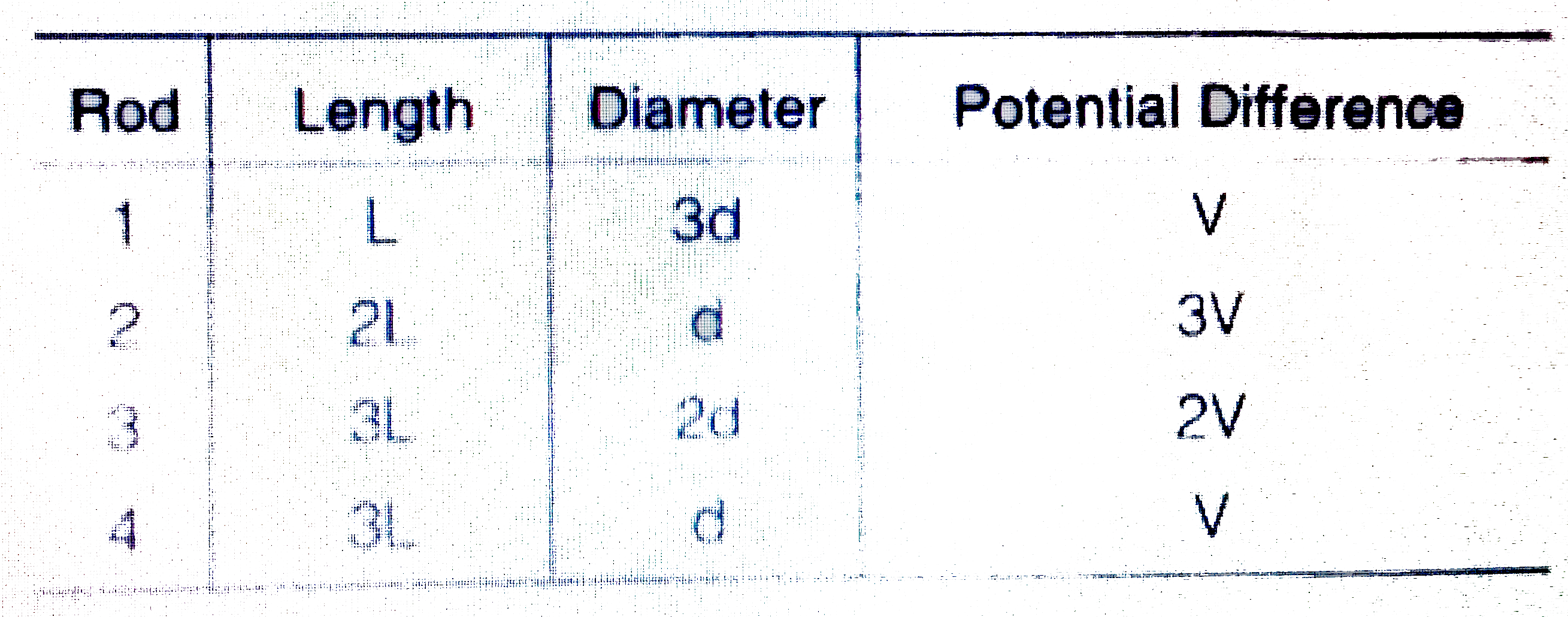
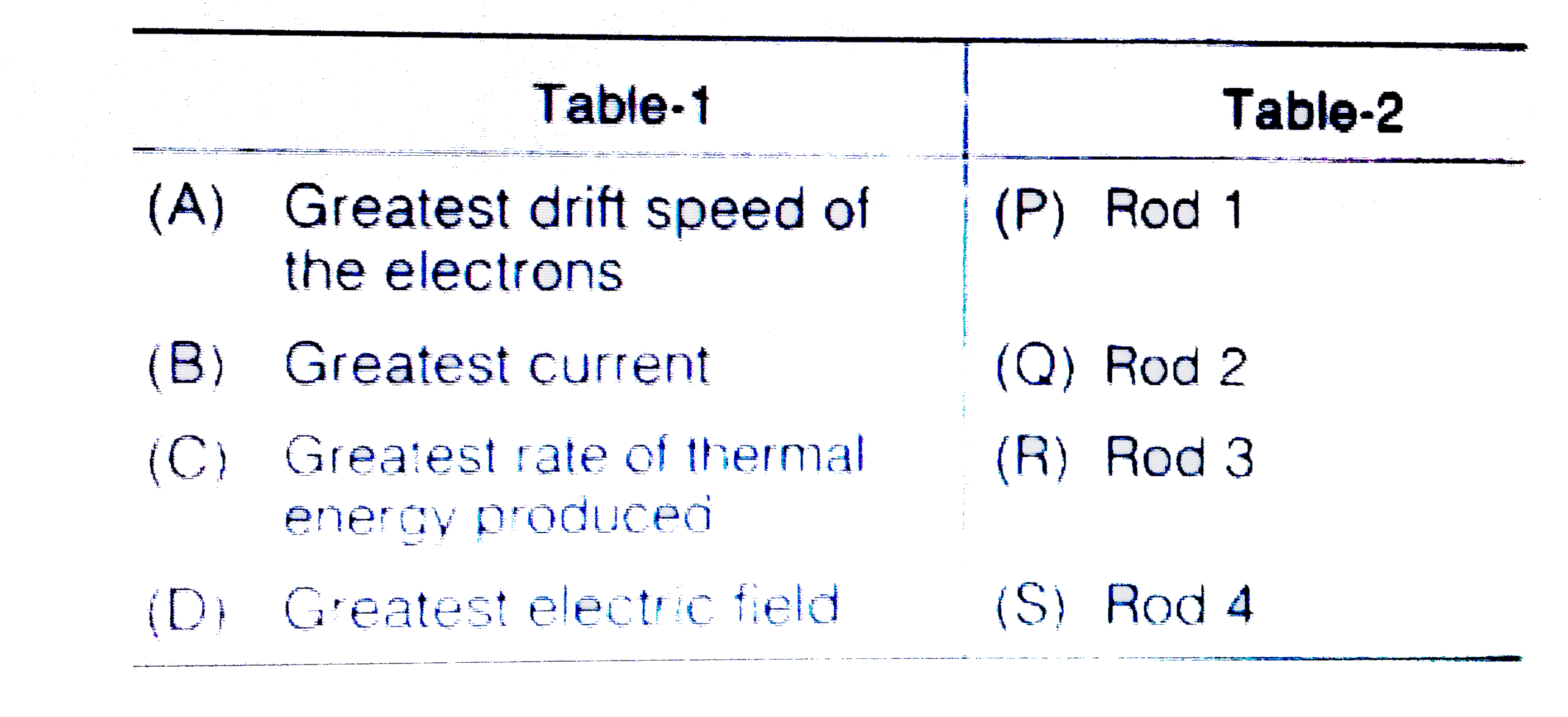
View SolutionCurrent is flowing from a conductor of nonuniform cross sectional area. If A1>A2, then find relation between
a. i1andi2
b. j1andj2
c. (vd)1and(vd)2 (drift velocity)
where I is current, j is current density, and V is drift velocity.
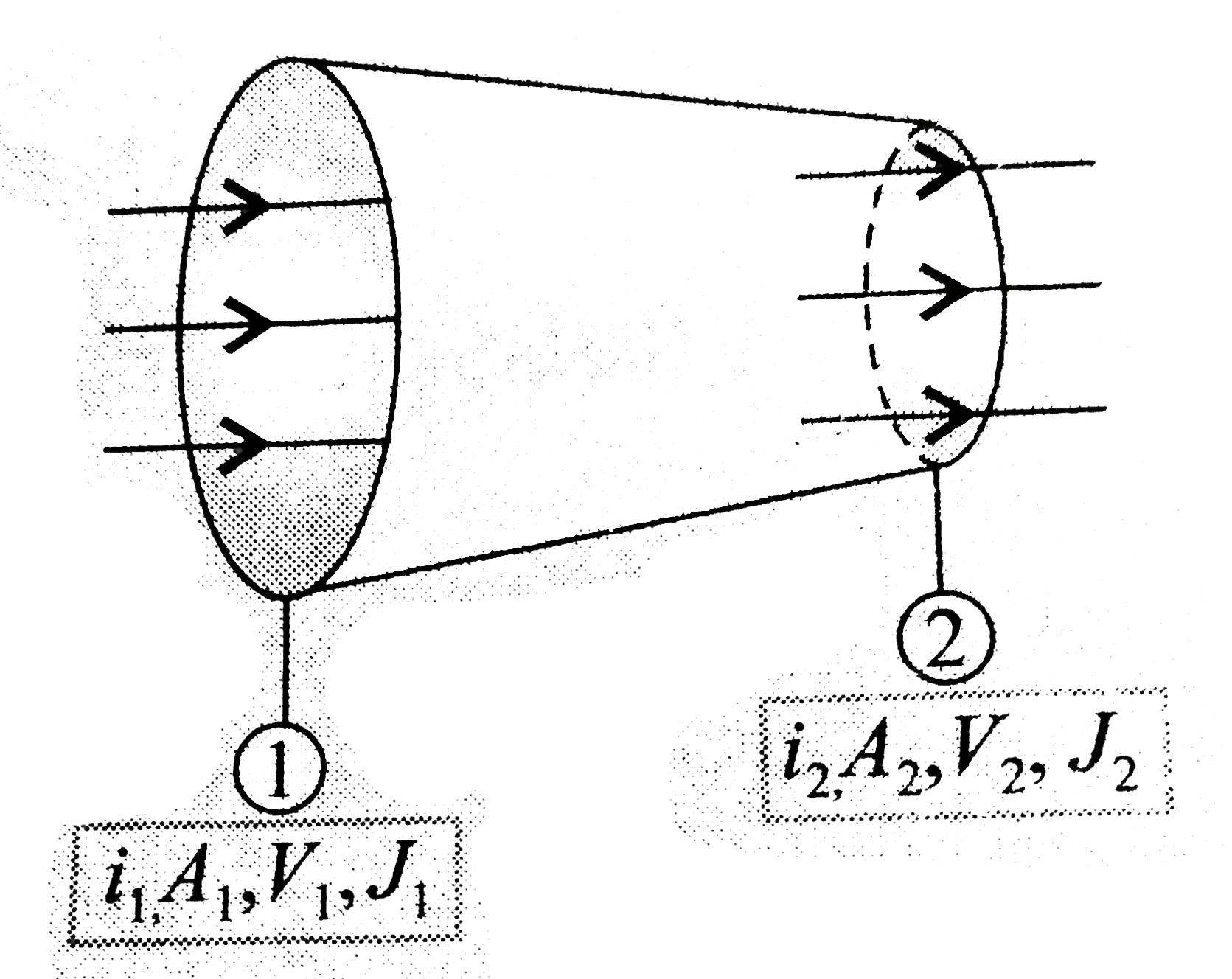
View SolutionConsider telecommunication through optical fibers. Which of the following statements is not true ?
View SolutionConsider a uniform wire of length l. Cross-sectional area A, Young's modulus of the material of the wave is Y. Some information related to the wire is given in column-1 and dependence of the result is given in column-2. Then match the approprite choice between the columns and match the list given in options
Column-I Column-II(A) Let us suspend wire vertically from a (p) Young'sModulusrigud support and attach a mass m atits lower end. If the mass is slightly pulleddown and released, it executes S.H.Mof a time period which will depend on(B) Work done in stretching the wire up to length (q) elongation (x)l+xwill depend on(C) If the given is fixed between two rigid (r) length (l)supports and its temperature is decreasedthermal stress that develops in the wirewill depend on(D) If the wire is pulled at its ends equal and (s) area of cross-section (A) opposite forces of magnitude F so that itundergoes an elongation x, according toHook's law, F=kx, where k is the forceconstant.Force constant (k) of the wirewill depend on
View SolutionA voltmeter of resistances 400(Ω)is used to measure the potential difference across the 100(Ω)resistor in the circuit shown in figure.(a) What will be the reading of the voltmeter ?(b) What was the potential difference across 100(Ω)before the voltmeter was connected ?

View SolutionA voltmeter having a resistance of 1800 Omega is employed to measure the potential difference across 200 Omega resistance, which is connected, to dc power supply of 50 V and internal resistance 20 Omega . What is the approximate percentage change in the potential difference across 200 Omega resistance as aresult of connecting the voltmeter across it?
View SolutionThe potential difference across the 100Ω resistance in the following circuit is measured by a voltmeter of 900Ω resistance. The percentage error made in reading the potential difference is
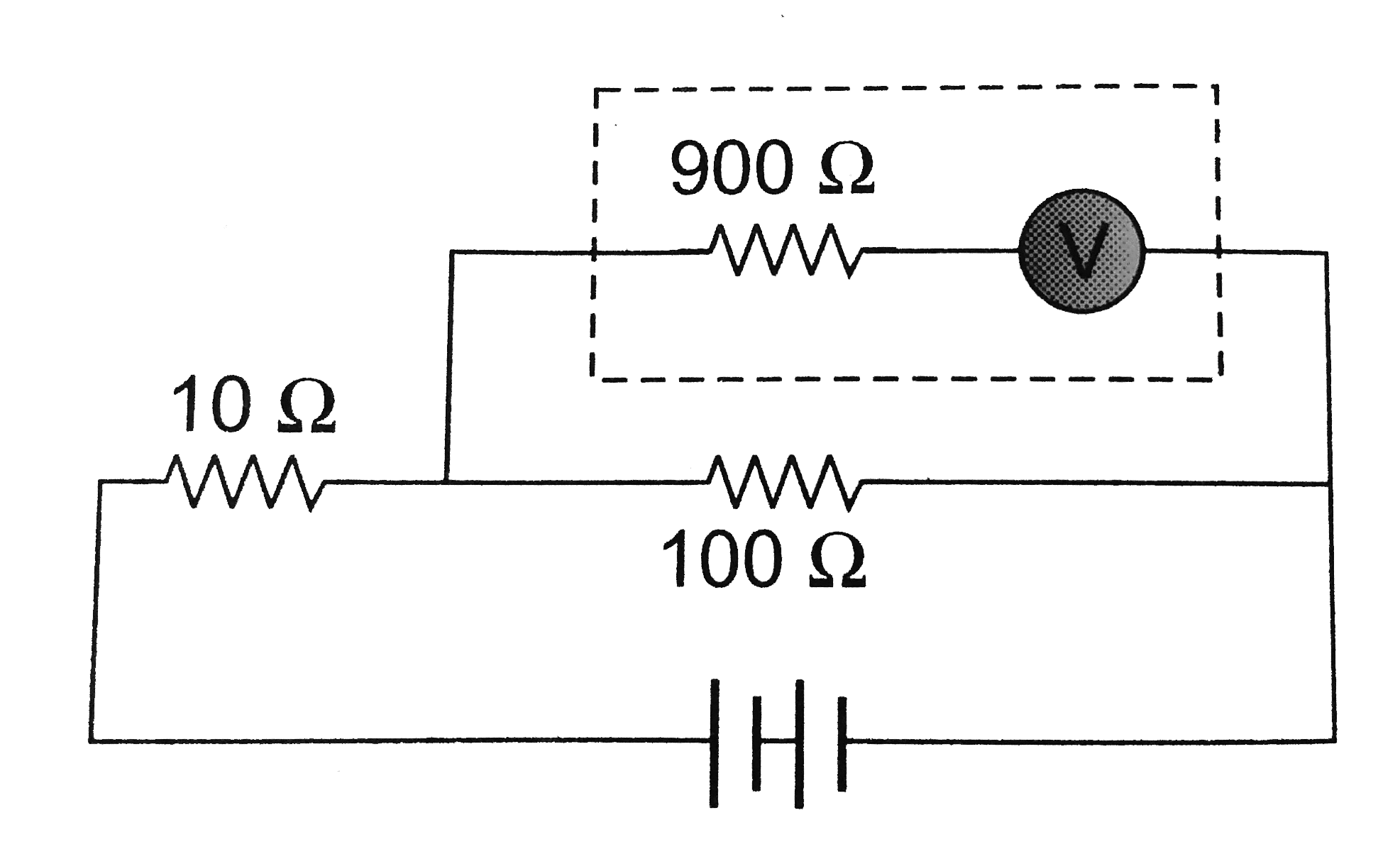
View SolutionA voltmeter of resistance 995Ω is connected across a cell of emf 3V and internal resistance 5Ω. Find the potential difference across the voltmeter, that across the terminals of the cell and percentage error in the reading of voltmeter.
View Solution50Ω and 100Ω resistors are connected in series. This connection is connected with a battery of 24 volts. When a voltmeter of 100Ω resistance is connected across 100Ω resistor, then the reading of the voltmeter will be
View SolutionA voltmeter of resistance 1000Ω is connected across a resistance of 500Ω in the given circuit. What will be the reading of voltmeter
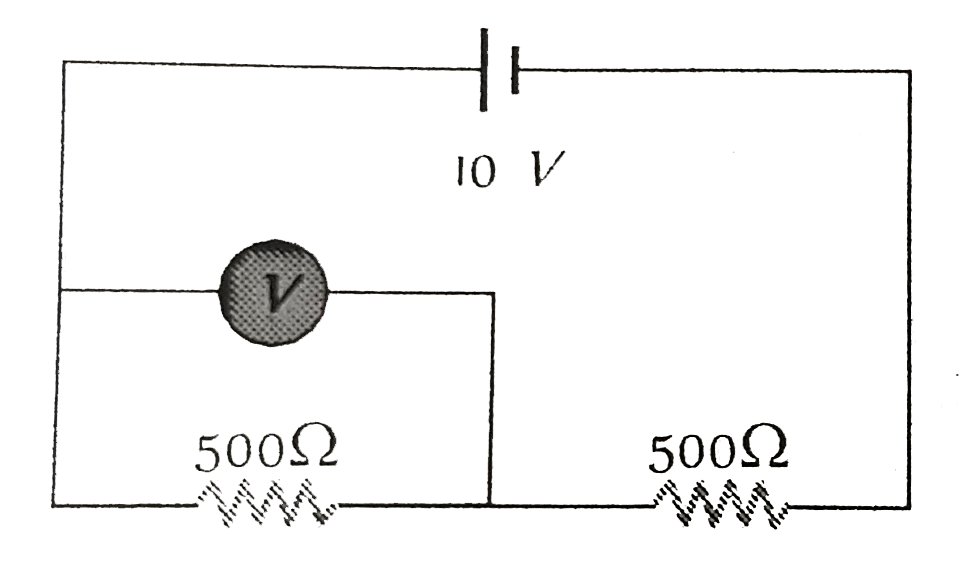
View SolutionIn the circuit shown in figure-3 .3 89, the voltmeter reads 30V when it is connected across 400 Omega resistance. Calculate what the same voltmeter will read when it is connected across the 300 Omega resistance.
View SolutionIn the circuit diagram shown in Fig. 4.53, a voltmeter reads 30 V when connected across 400Ω resistance. Calculate what the same voltmeter reads when it is connected across 300Ω resistance.
View SolutionA voltmeter having resistance of 1800 Omega is employed to measure the potential difference across 200 Omega resistance which is connected to DC power supply of 50 V and internal resistance 20 Omega . What is the percentage change in potential difference across 200 Omega resistance as a result of connecting voltmeter across it ?
View SolutionA voltmeter having a resistance of 1800 Omega employed to measure the potential difference across a 200 Omega resistor which is connected to the terminals of a dc power supply having an emf of 50 V and an internal resistance of 20 Omega . What is the percentage decrease in the potential difference across the 200 Omega resistor as a result of connecting the voltmeter across it?
View SolutionIn the circuit shown, reading of the voltmeter connected across 400Ω resistance is 60 V. If it is connected across 300Ω resistance then reading in volt will be
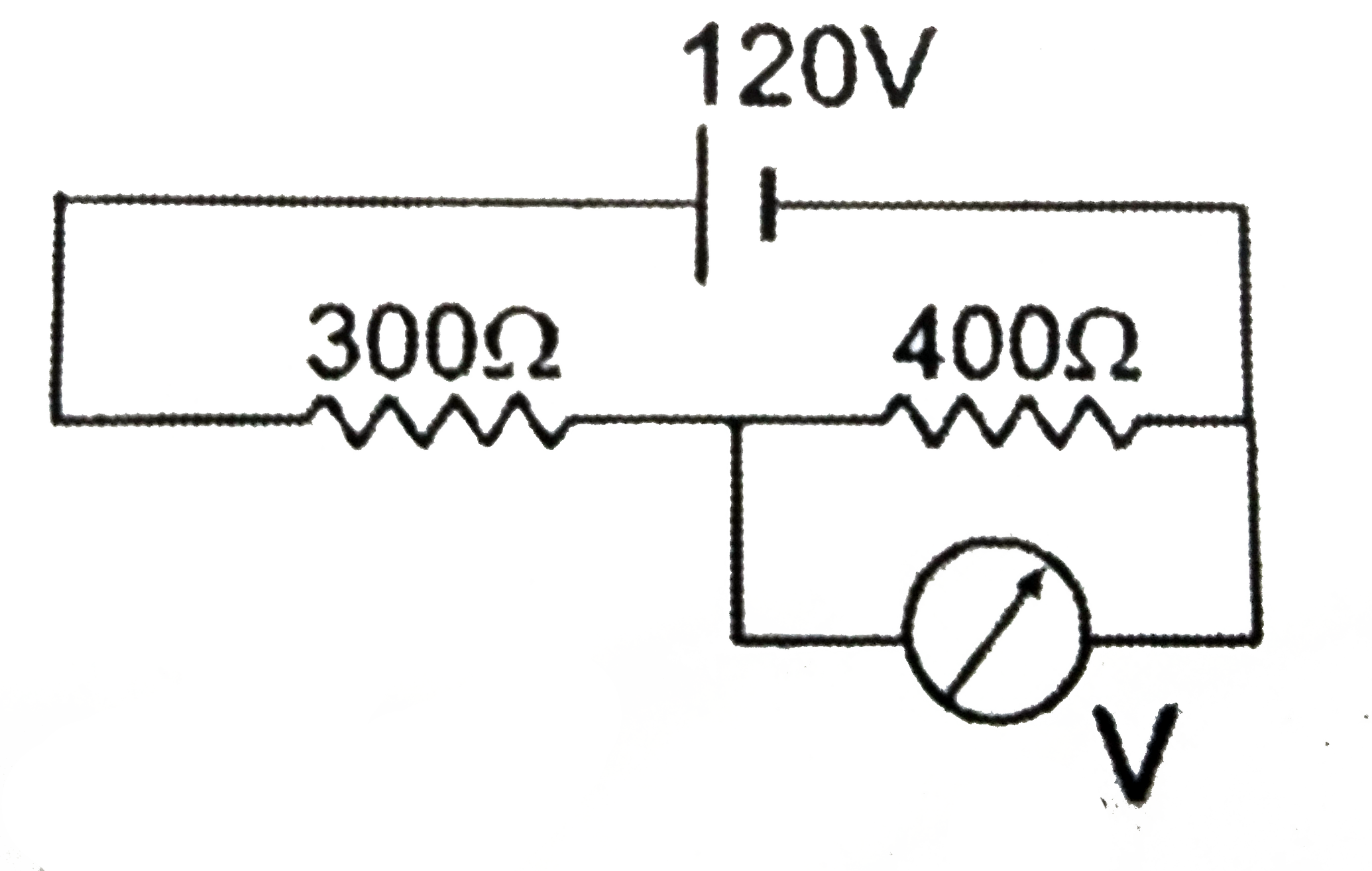
View Solution

